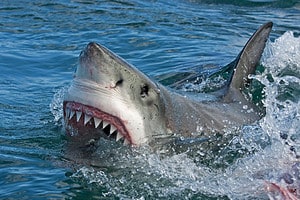There are a number of ways to catch a fish and many types of bait for luring game fish in. Choosing the best bait depends on a lot of factors, such as the prey your targeted fish usually eats. Some plastic lures have the appearance of aquatic critters. They may even be programmed to move like real prey.
However, for some anglers, nothing beats real live bait. Some common bait includes worms and crustaceans, but today we’re going over the 10 best baitfish and ranking them by effectiveness. We’ll also examine other factors, like the baitfish’s hardiness and availability. Let’s dive in!
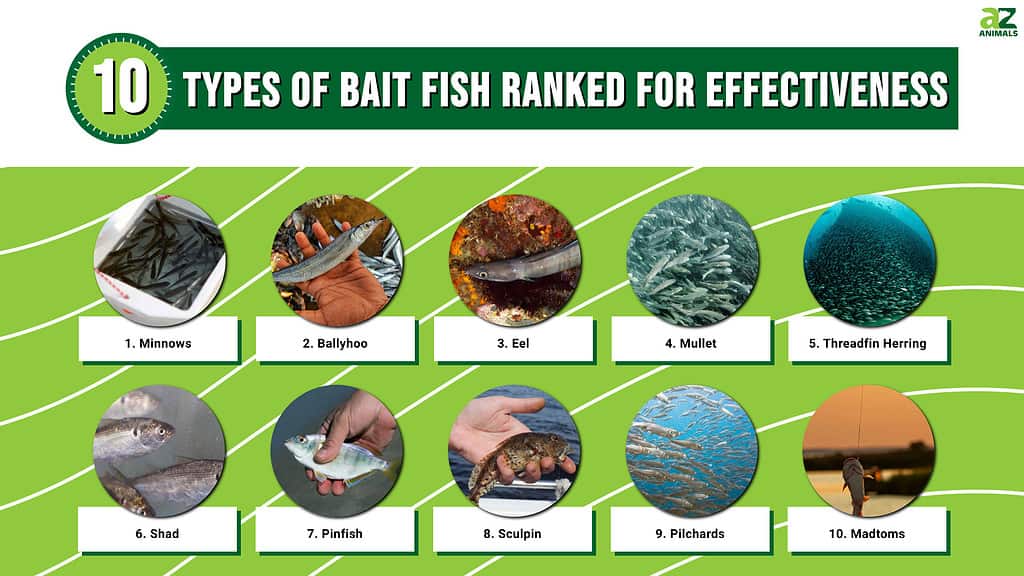
10. Madtoms
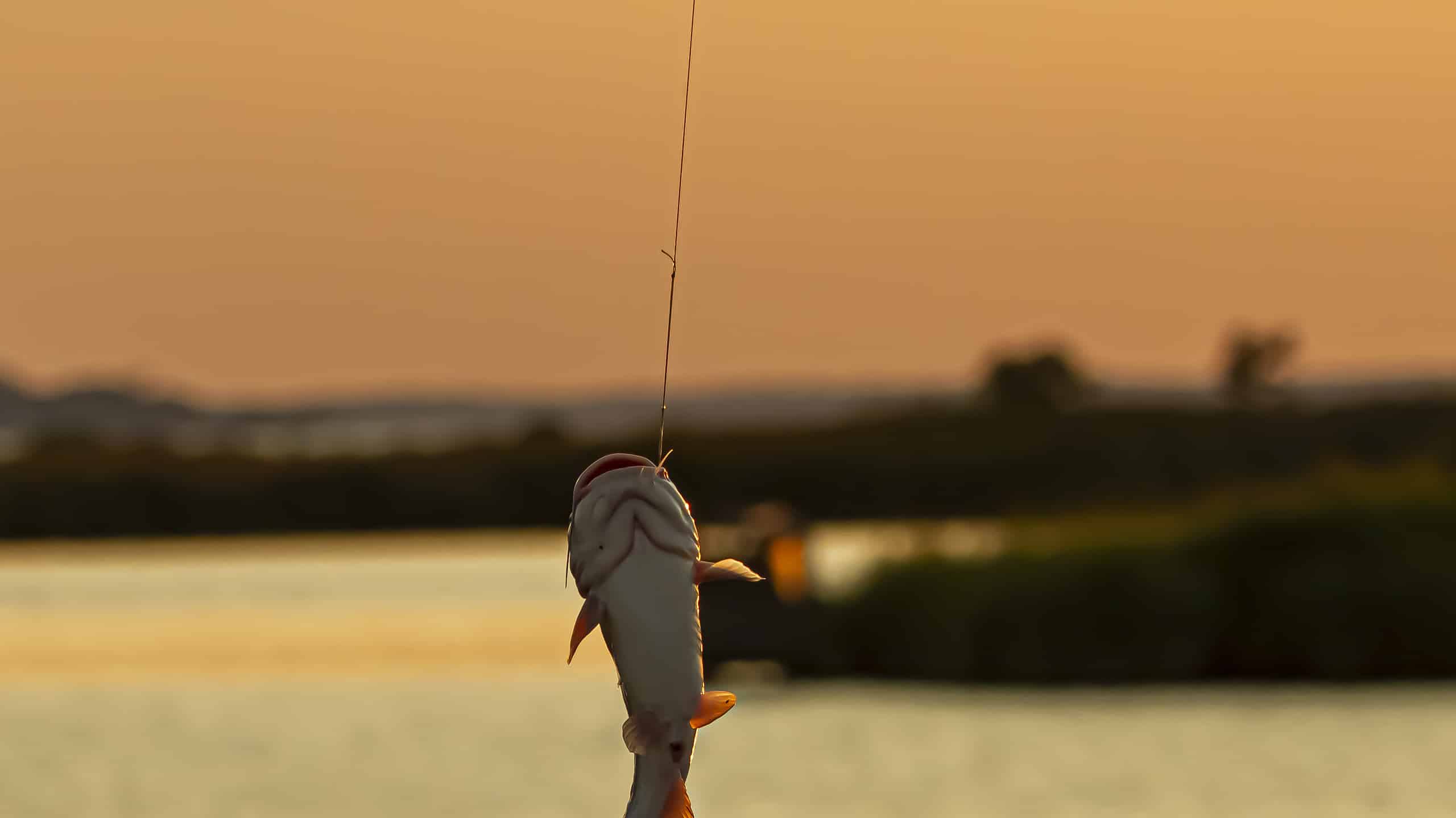
Madtoms are a common freshwater catfish in North America.
©iStock.com/Grandbrothers
Madtoms, also known as stonecats, are freshwater catfish that are common in North America. Fishing with madtoms is not for inexperienced anglers for several reasons.
First, madtoms are not likely to be readily available at bait shops. If you want to use them as baitfish, you’ll probably have to catch your own. Madtom can be found by carefully lifting up rocks in rivers and streams.
Second, madtom spines contain a mild venom. Their stings are painful and comparable to a bee sting in humans. For this reason, madtoms can be tricky when using them as live bait.
However, the patient fisherman who uses madtoms may be rewarded. Madtoms tend to attract larger freshwater fish. According to Bass Pro Shops, they are very attractive to smallmouth bass in particular. Madtoms are also hardy fish that will last a lot longer than smaller live bait.
Pros:
- Good for catching larger fish such as smallmouth bass
- Hardy live bait
Cons:
- Less readily available
- Tricky to handle because of venomous spines
9. Pilchards
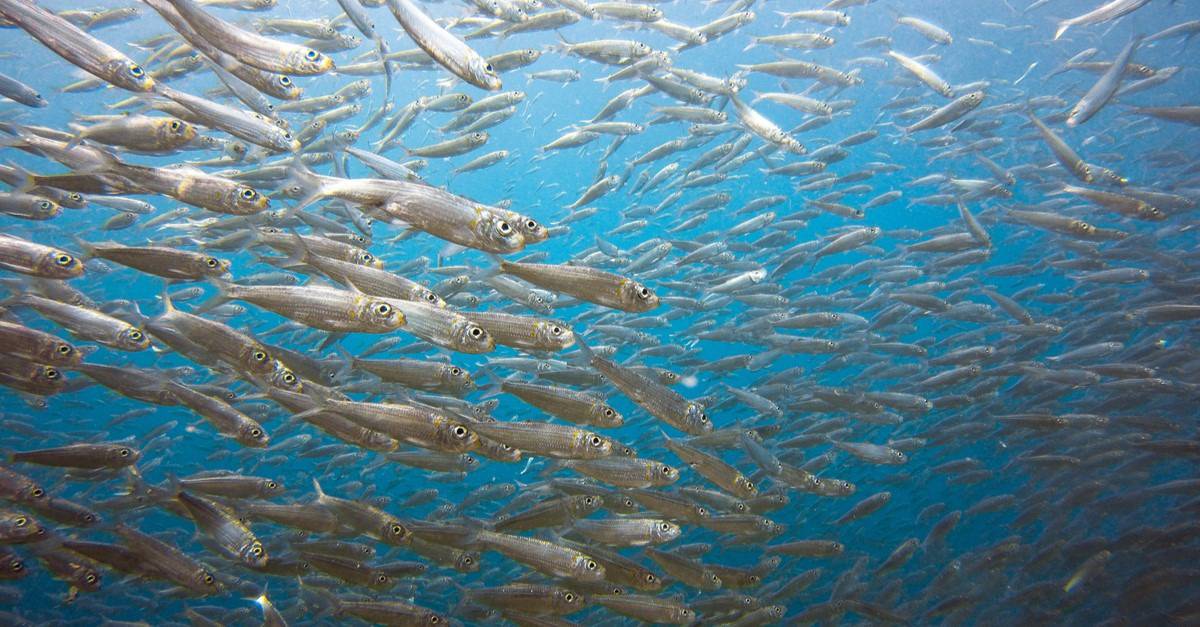
Smaller, younger pilchards are referred to by their commonly known name of sardines.
©SaltedLife/Shutterstock.com
Pilchards are a great bait fish for anglers looking to catch an inshore saltwater fish. While the name pilchard might sound unfamiliar, you’ve probably heard of sardines. These fish are actually the same species, but pilchards are the larger, adult fish.
Fishing with pilchards as live bait is a great option for those looking to catch snook, redfish, trout, and tarpon. Pilchards are relatively easy to catch in the warmer summer months using a cast net along the shallows of beaches or inlets, according to Curated.
When fishing with pilchards as live bait one useful method is to use a popping cork. When game fish come to investigate the sound, they can’t resist the allure of a live bait pilchard.
Pros:
- Attractive to inshore species
- Easy to catch a large amount of bait
Cons:
- Less hardy
- Likely not attractive to very large game fish
8. Sculpin
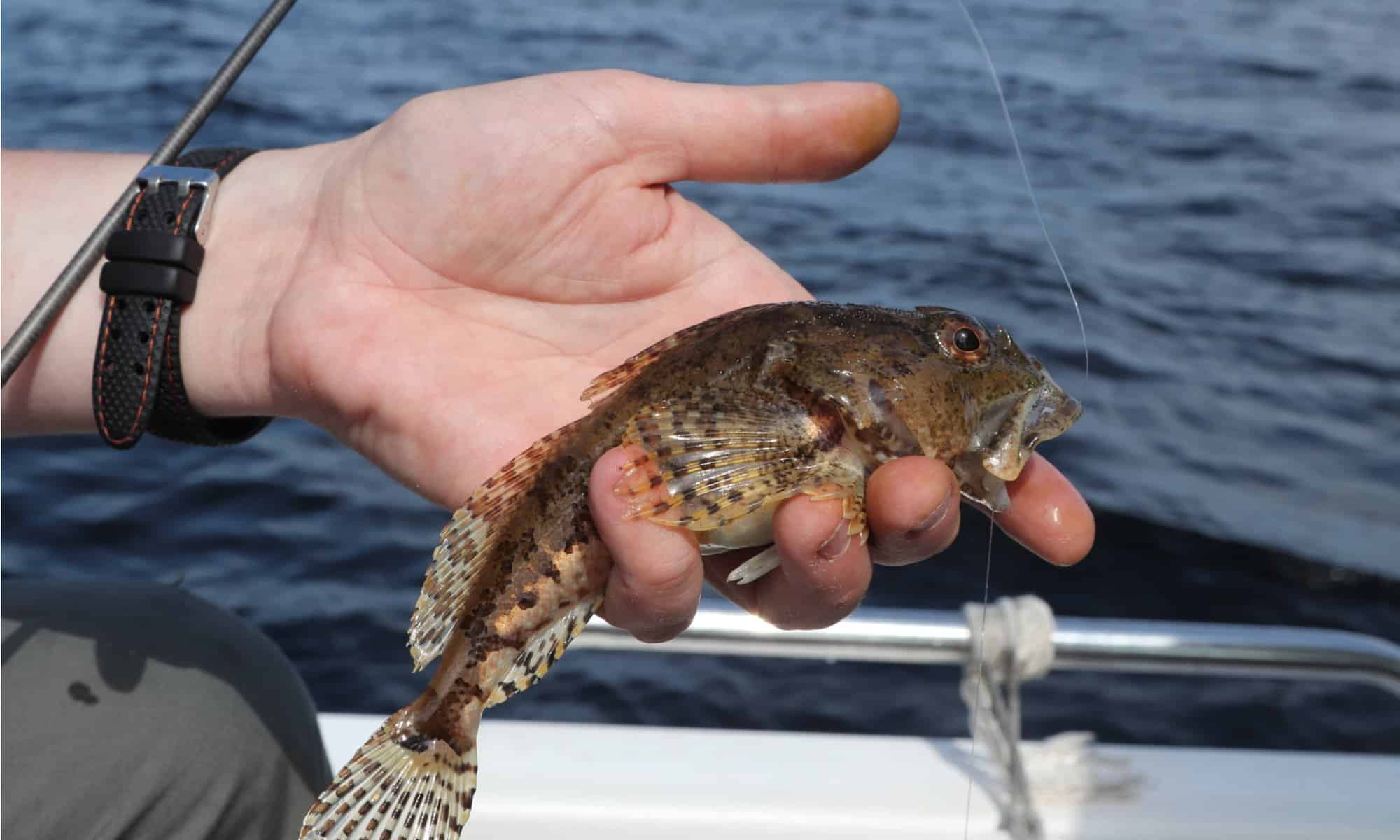
The skin of the Sculpin is prickly and the spines on its head and fins contain a poison. It’s easy for a fisherman to get stuck by this fish’s spines while handling it.
©Nadezhda Malysheva/Shutterstock.com
Sculpin are small fish with flattened heads and large mouths and eyes. Unlike most other baitfish, sculpins are bottom dwellers, so catching them requires a unique technique.
Orvis News recommends “casting the fly quartering upstream, letting it sink deep, and then use very short, sharp strips to make the fly dart and stop along the stream bottom.”
When fishing in streams, sculpins are baitfish commonly used to catch large brook and brown trout. They may also attract young northern pike.
It’s worth noting that sculpins have spines on their heads and fins containing poison. Fishermen need to use caution, as they can stick their hands on the spines, causing swelling, pain, and potentially infection.
Pros:
- Attractive to large trout, smallmouth bass, and walleye
Cons:
- Requires specific fishing methods to catch
- Spines can poke fishermen and may deter game some fish
7. Pinfish
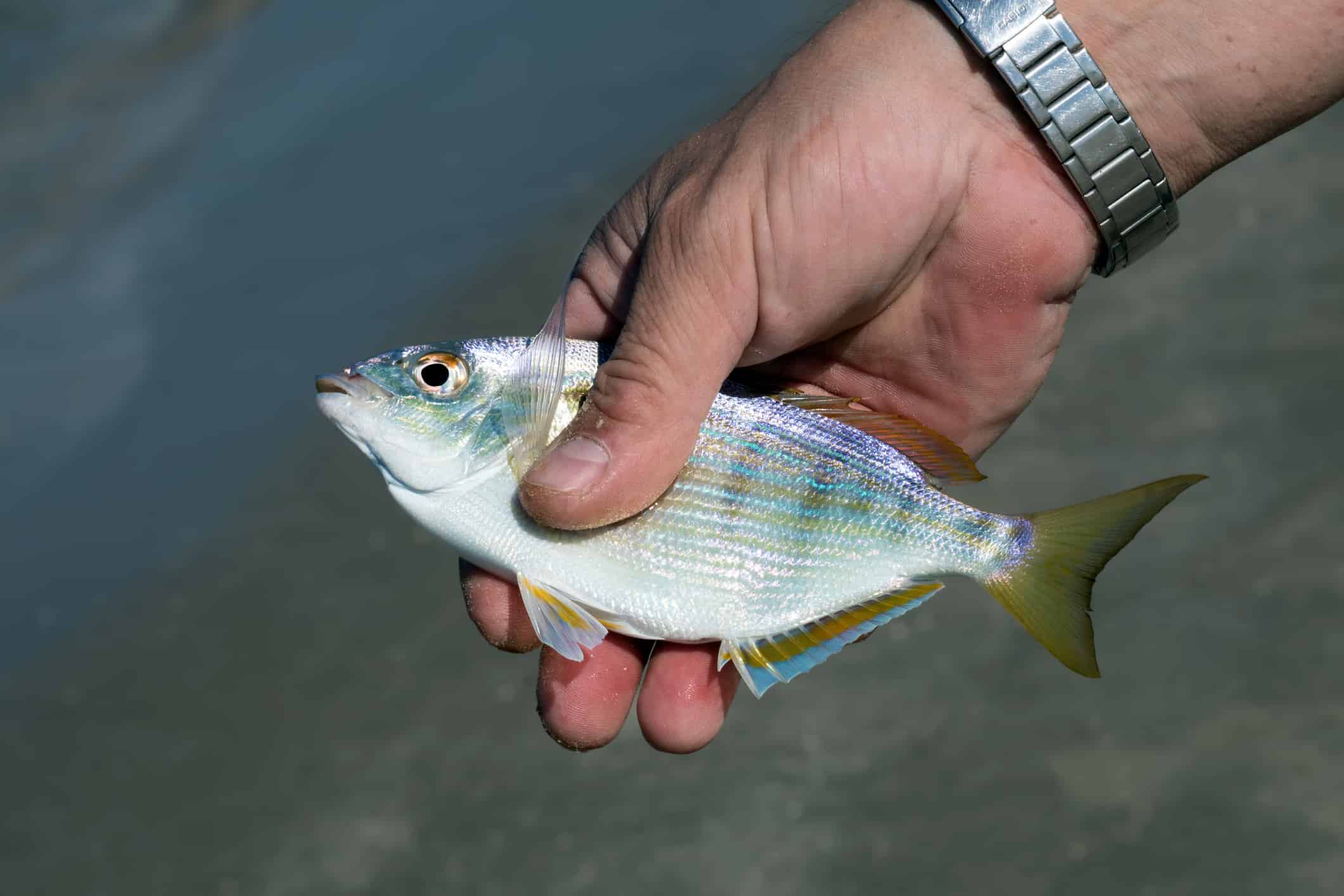
Pinfish have sharp spines on their dorsal fins that can poke your hand.
©iStock.com/irin717
Pinfish are a great option for catching a variety of saltwater species. They can be used as live bait both inshore and offshore.
For inshore fishing, a freeline or popping cork method mentioned earlier in this article may be effective. Curated advises using a weighted knocker rig when fishing offshore for snapper and cobia. Pinfish are also likely to attract gamefish such as grouper and amberjack.
Catching pinfish usually involves chumming the area and casting a net or leaving a pinfish trap overnight. Be cautious when handling pinfish. As their name suggests, these creatures have sharp spines or “pins” on their dorsal fins that can poke your hand.
Pros:
- Easy to catch
- Attracts a variety of game fish
Cons:
- Sharp dorsal spines can poke your hand
- Pins may deter some game fish
6. Shad
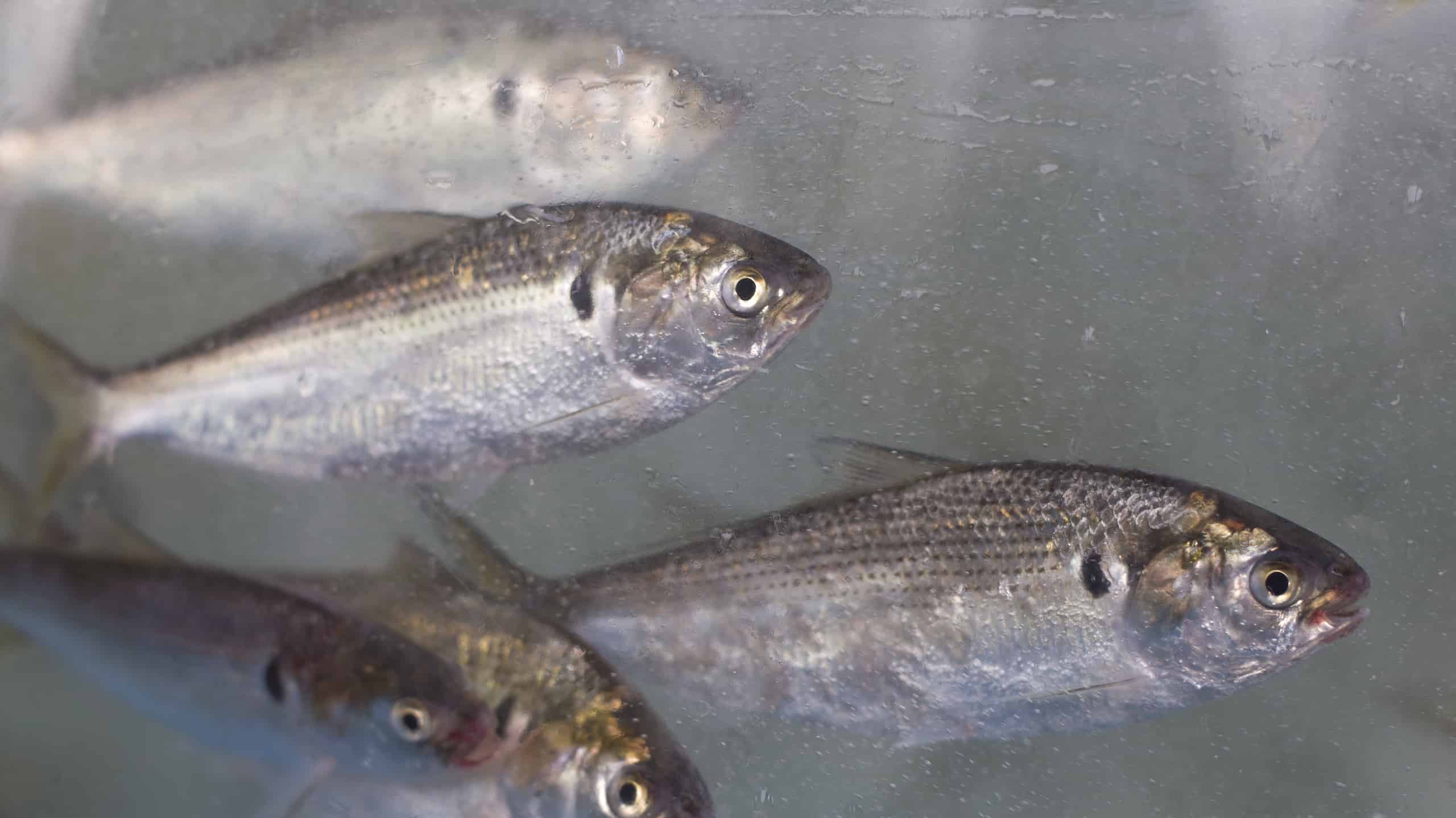
Shad are an effective baitfish for catching large fish in open water.
©iStock.com/bong hyunjung
Fishing with pilchards in saltwater is a similar experience to fishing with shad in freshwater. Shad are a great live bait option for catching large fish that roam the open water, such as stripers, big flathead and blue catfish, largemouth bass, and walleyes.
Shad can be caught with a cast fishing net. Bass Pro recommends fishing for shad at night by hanging a lantern over the boat’s gunwale and waiting for the light to attract a large group of the bait fish.
Like pilchards, an effective way to fish with live shad involves using a bit of cork and drifting the bait fish beneath it. This method is best for shallower waters, but shad are also very effective in the open water.
Pros:
- Can be used to catch larger fish in open freshwater
- Dead shad or chunks of shad can sometimes make effective bait
Cons:
- Not very durable bait fish
5. Threadfin Herring
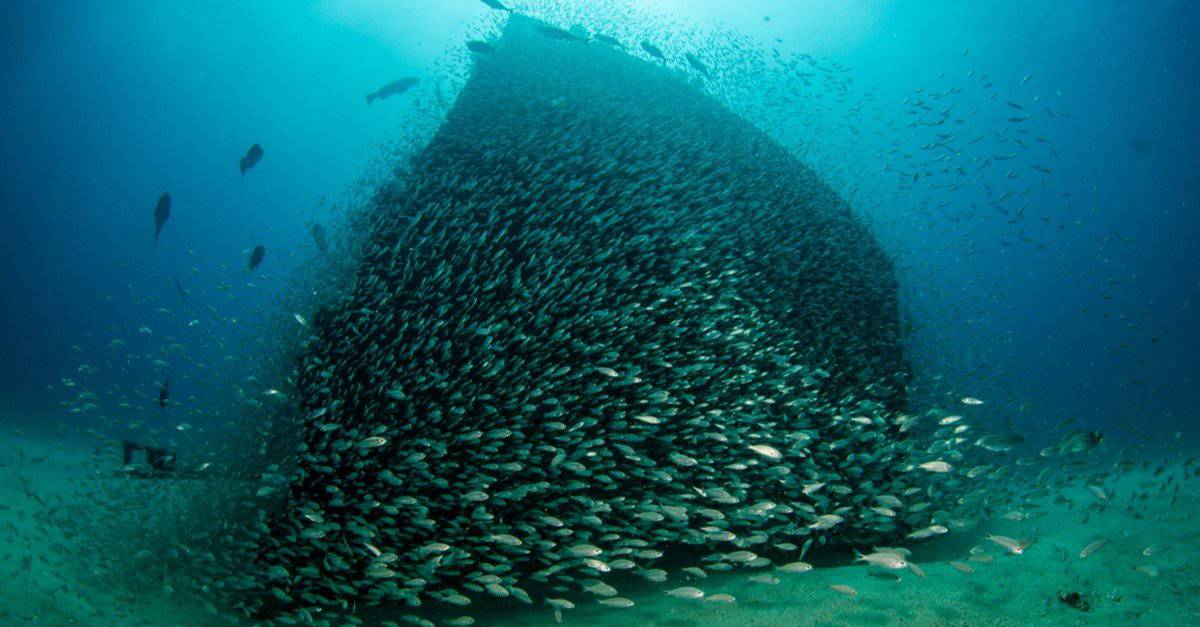
In deep water, fishermen can catch threadfin herring using a Sabiki rig.
©Leonardo Gonzalez/Shutterstock.com
Threadfin herring are a bait fish commonly found in the Gulf of Mexico and often confused with whitebait. They are easy to locate under bridges close to passes and inlets and can be caught using a cast net in shallow waters. In deep water, a Sabiki rig will do the trick.
Threadfin herring are a great option for catching pelagic species like king mackerel, wahoo, sailfish, tuna, bonito, and barracuda. Pelagic fish live in the pelagic zone of the ocean, aka the sunlit waters several hundred feet deep, but above the coastal shelf.
Pros:
- Attracts a variety of pelagic species
- Live in large schools
Cons:
- Delicate baitfish — use extreme caution when handling
4. Mullet
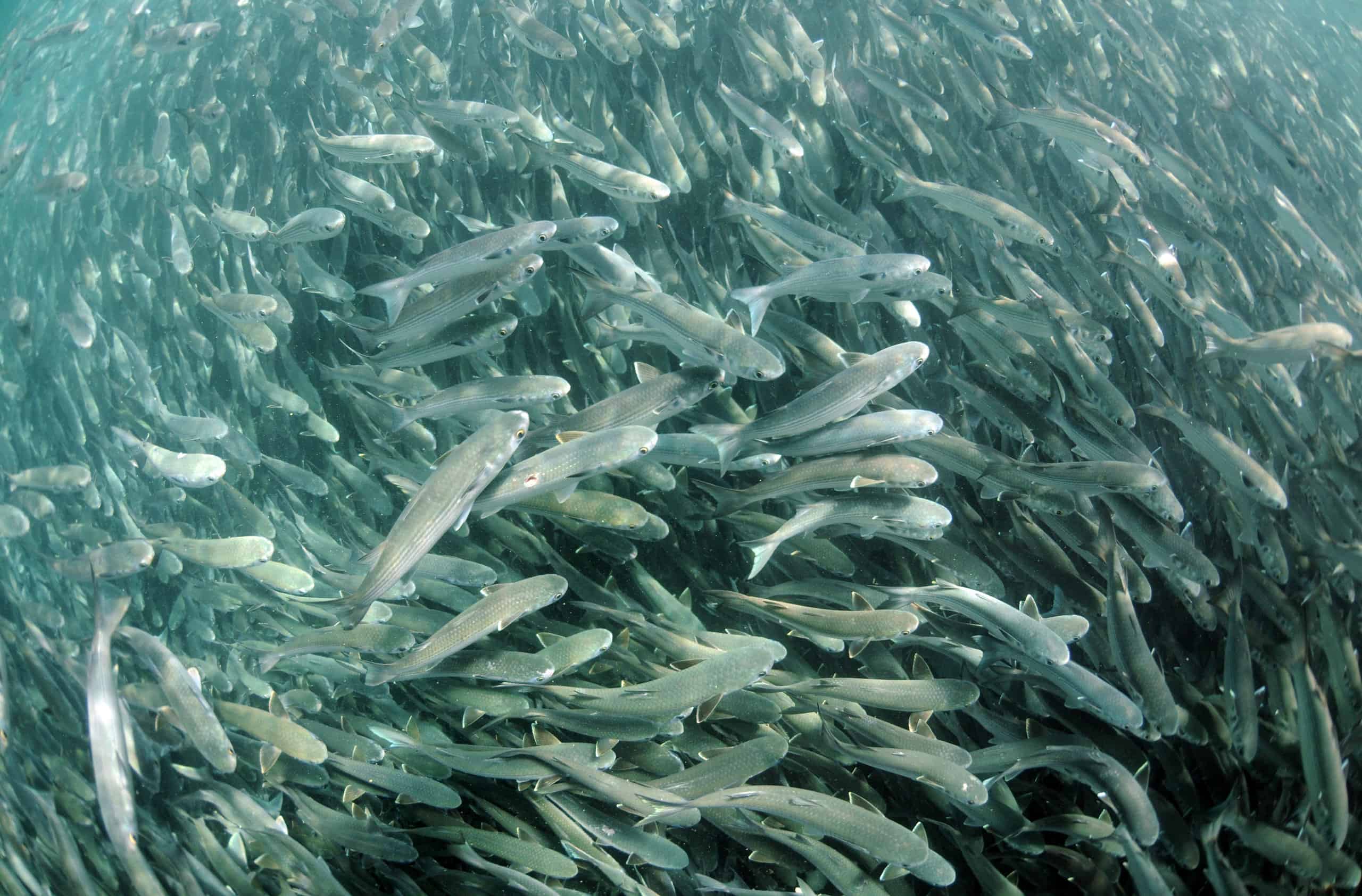
Mullet fish attract a wide variety of large and small gamefish.
©FtLaud/Shutterstock.com
Mullet fish can be found in coastal temperate and tropical waters worldwide. Catching these creatures for bait fish is a little trickier. It involves using a heavier cast net in shallow creeks and backwaters.
Gathering enough mullet for a fishing trip may take several hours, but once you have them you likely won’t be disappointed. Though adult mullet are typically freshwater fish, most species have a high tolerance for salinity, making them versatile bait fish.
Mullet are a great option for catching large fish such as snook, jack crevalle, tarpon, snapper, grouper, and even sharks. Smaller mullet can also be used to reel in smaller game fish. Curated recommends using a freeline with a big circle hook.
Pros:
- Durable
- Attractive to large fish
- Dead mullet can also be used as bait
Cons:
- Time-consuming to catch
3. Eel
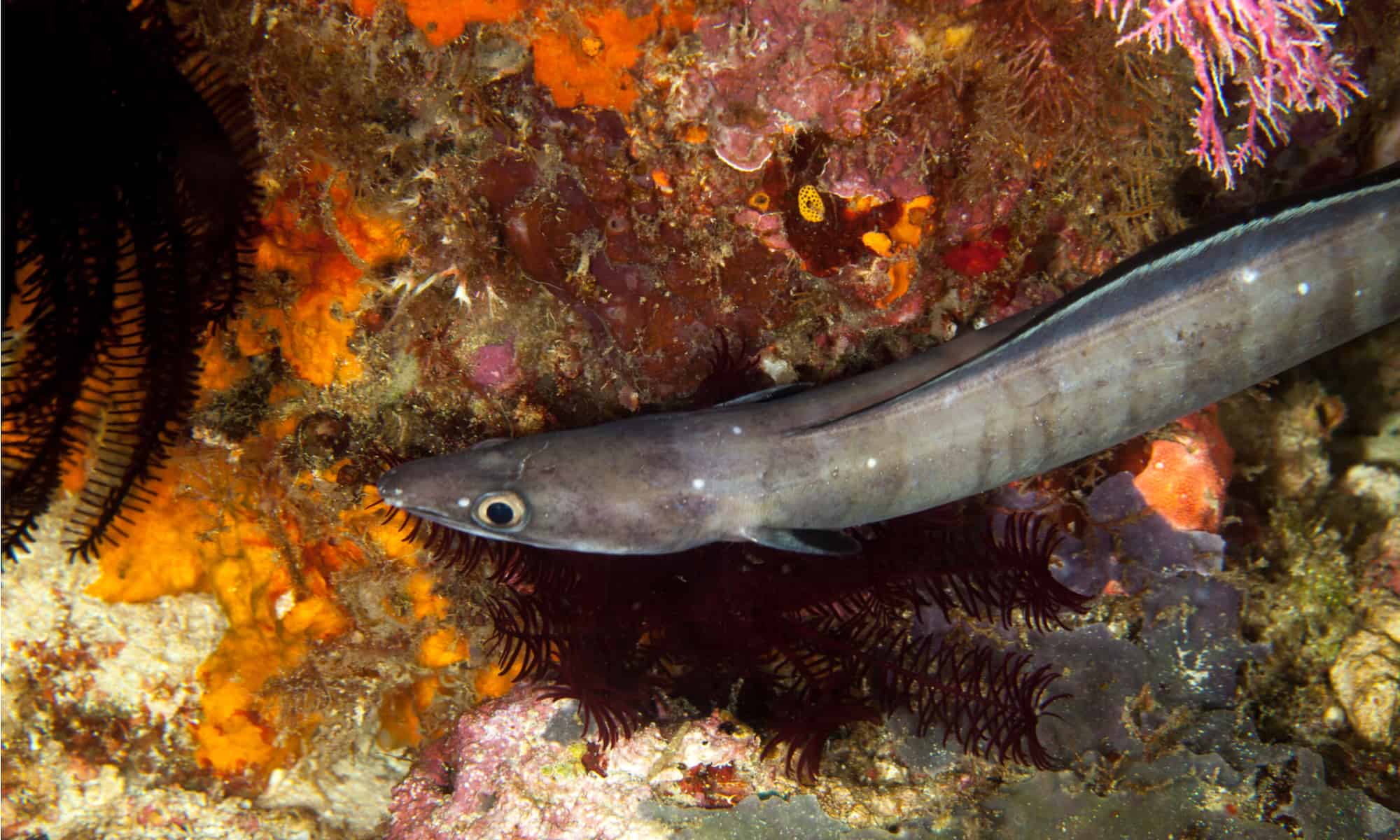
Eels are hardy live bait that can be used in fresh and saltwater fishing.
©Gerald Robert Fischer/Shutterstock.com
Eels are some of the best live bait around and they can be used in both fresh and saltwater fishing. While an eel’s primary habitat is saltwater environments, they sometimes travel to freshwater for breeding purposes.
Live eels are excellent bait fish because they are hardy creatures, as well as strong and lively swimmers, according to Finao Sportfishing. They may attract fish such as cobia, striped bass, chinook salmon, and steelhead trout.
Pros:
- Hardy and lively
- Can live in salt or freshwater
Cons:
- Slippery creatures can be difficult to hook
2. Ballyhoo
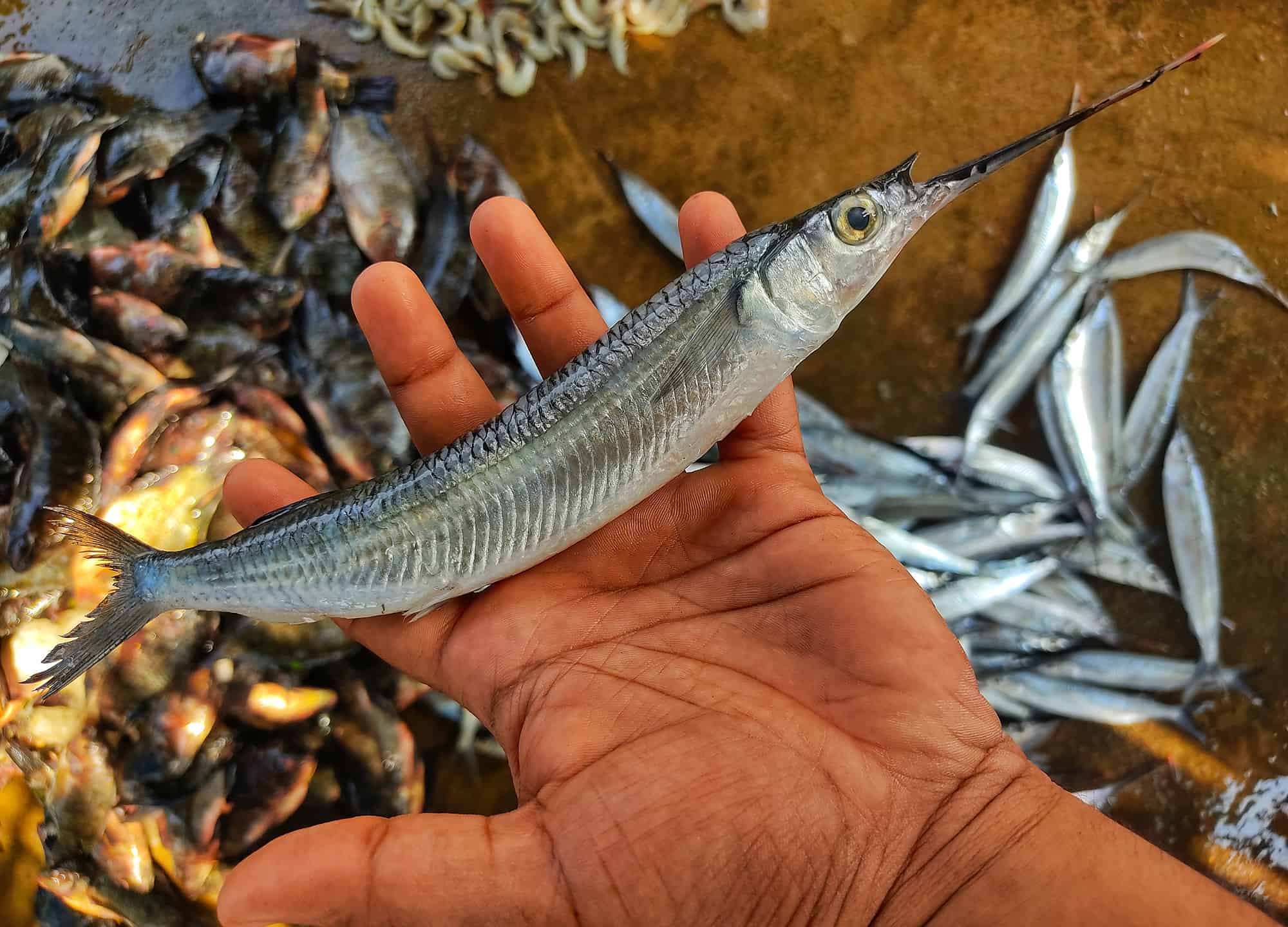
Ballyhoo are also known as halfbeak fish due to their elongated lower jaw.
©iStock.com/Biswa1992
Ballyhoo are saltwater fish with an elongated lower jaw that sticks out much further than their short triangular upper jaw, earning them the nickname “halfbeak.” They are a popular live bait for saltwater fishermen that are useful for catching a wide variety of pelagic fish.
According to In the Spread, ballyhoo can be sued to catch marlin, sailfish, swordfish, dolphin, tuna, and wahoo. Some companies exist that catch and sell ballyhoo as bait fish since this species is so widespread and numerous.
Ballyhoo are easy to rig and can be pretty hardy when taken care of properly. One of the only cons of using ballyhoo is that they are difficult to get during certain times of the year. However, ballyhoo make effective bait even after they are dead.
Pros:
- Hardy
- Attract a wide variety of pelagic fish
- Can be used as bait alive or dead
Cons:
- Ballyhoo are mainly available between November and March
1. Minnows
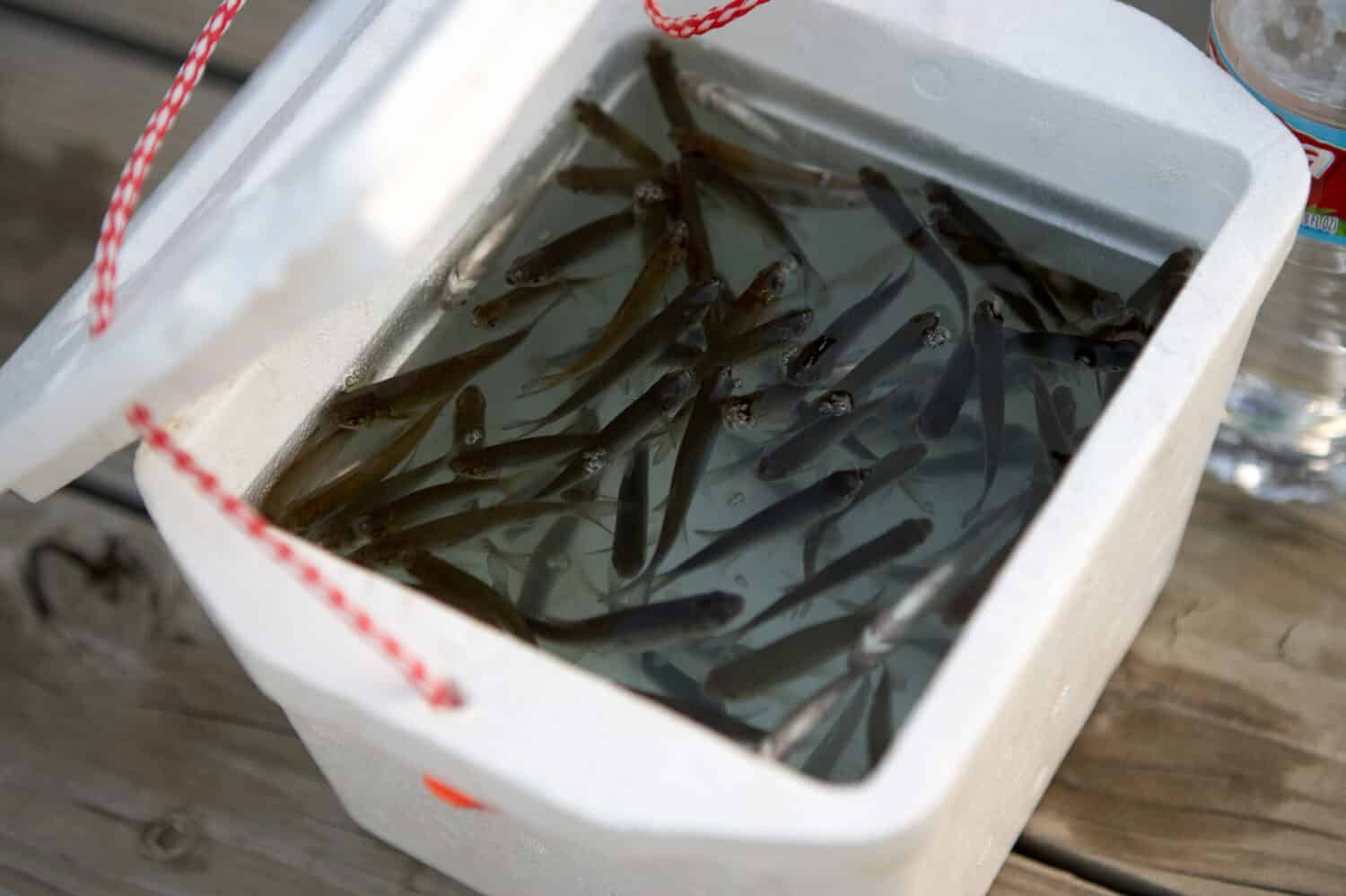
Minnows are one of the most commonly used baitfish for making a freshwater catch.
©CLP Media/Shutterstock.com
A number of large freshwater fish eat minnows, including pike, bass, catfish, and trout. The term “minnow” refers to small silvery freshwater fish in the Cyprinidae family — which is the largest of all fish families. There are between 1,200-1,500 known species of minnow worldwide, according to the Missouri Department of Conservation.
Since they are so common, minnows are usually readily available at a local bait store. They should be stored in a plastic foam cooler, bait bucket, or livewell. You can also catch minnows to use as baitfish yourself.
Bass Pro Shops advises seining to catch minnows. This method involves using a large net with two poles to catch minnows in a small creek or shallow edge of a lake. You can then select the proper size of minnow for the fish you want to catch. Other methods include using umbrella nets and cylindrical traps.
Minnow are readily available freshwater fish that attract a wide variety of game fish. For this reason, we have deemed minnows as the best overall freshwater baitfish.
Pros:
- Common baitfish
- Attractive to many different game fish
Cons:
- Less hardy
Summary of the Best Bait Fish
| Rank | Bait Fish | Saltwater or Freshwater | Uses |
|---|---|---|---|
| 1 | Minnows | Freshwater | Pike, bass, catfish, trout |
| 2 | Ballyhoo | Saltwater | Marlin, sailfish, swordfish, dolphin, tuna, wahoo |
| 3 | Eels | Saltwater or Freshwater | Cobia, striped bass, chinook salmon, steelhead trout |
| 4 | Mullet | Saltwater or Freshwater | Snook, jack crevalle, tarpon, snapper, grouper, sharks |
| 5 | Threadfin Herring | Saltwater | King mackerel, wahoo, sailfish, tuna, bonito, barracuda |
| 6 | Shad | Freshwater | Stripers, big flathead and blue catfish, largemouth bass, walleyes |
| 7 | Pin Fish | Saltwater | Snapper, cobia, grouper, amberjack |
| 8 | Sculpin | Freshwater | Brook and brown trout, northern trout |
| 9 | Pilchards | Saltwater | Snook, redfish, trout, tarpon |
| 10 | Madtoms | Freshwater | Smallmouth bass |
The photo featured at the top of this post is © NaturePicsFilms/Shutterstock.com
Thank you for reading! Have some feedback for us? Contact the AZ Animals editorial team.




